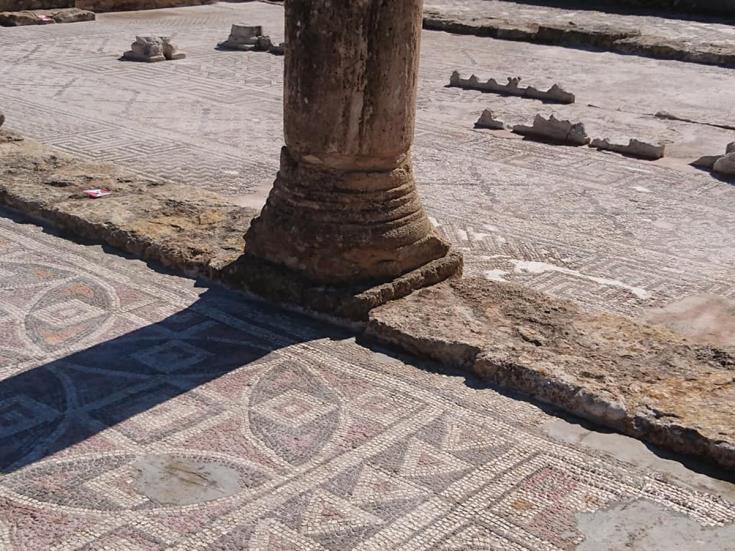The restoration of the mosaic floor in the basilica of the Holy Trinity, in the occupied Karpasia, was completed, with the bi-communal Technical Committee for Cultural Heritage continuing the restoration work on the rest of the early Christian monument.
As the Greek Cypriot Head of the Technical Committee, Takis Hatzidimitriou, stated to KYPE, the completion of all the works in the basilica is placed within 2019.
The first phase of the project for the restoration of the mosaics lasted about two months and according to Mr. Hatzidimitriou concerned the cleaning, maintenance and fixing of the mosaics of the 5th and 6th century AD, thus revealing an aspect of the unique beauty of the basilica. of the Holy Trinity. "Work has begun and the splendor of the monument has been revealed," he said.
He also said that in view of the coming of winter, the mosaics will be covered with special protective material, while maintenance work on the rest of the monument is underway.
Among other things, cement and iron interventions will be removed from previous maintenance that had been done at the monument and the restoration will be done with compatible materials.
According to the E / k Head of the Technical Committee, the mosaic floor will be unveiled next May along with the completion of the project.
Finally, Mr. Hatzidimitriou said that Greek Cypriot and Turkish Cypriot conservators are working with dedication and enthusiasm for the restoration of the monument. "The atmosphere we met was amazing. "I can say that this excited me the most," he concluded.
According to the theologian-Byzantinologist Andreas Foulias, the basilica of the Holy Trinity is a relatively small three-aisled basilica (18x14 the main church) with three prominent semicircular arches with a narthex and atrium to the west.
The floor of the aisles as well as the narthex was covered with important geometric and some figurative mosaics, while its construction dates back to around 425 AD. In the area there is also a baptistery with a cruciform swimming pool similar to that of the basilica of Agios Epiphanios in the area of ancient Salamis / Constantia.
Famagusta.News / KYPE
